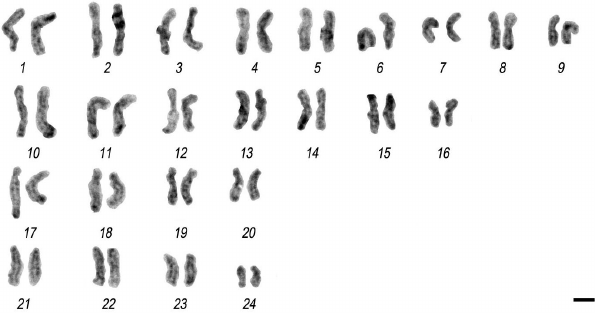Introducing RedditED, our brand new feature, where we pick up a very cool discussion thread, full of quirky informative responses and spin a story around it! This week, we picked out a discussion in the field of biology.
Modern day humans have 23 pairs of chromosomes. Our ancestor apes must have had 24 pairs of chromosomes. Meaning that a mother with 24 chromosomes gave birth to a 23 chromosome child. How did this 23 chromosome ape breed with its 24 chromosome pair species? Wouldn’t their child have 47 chromosomes meaning it’s sterile? Let’s have a look at the discussion that took place.
One user said:
I actually have 45 chromosomes and am a completely normal human.
What happens is that two chromosomes merge to form one. For me, this occurred because two long chromosomal arms merged to form one, while the short arms also merged, but were tossed out because they are tiny and contain no useful genetic information.
I have as much generic information as I need, no more, no less, even though now I have a super long chromosome 13 + 14. The body doesn’t care about the chromosome count much, mainly the genetic info stored on it.
Chromosomes are divided in half by arms, the centre of which being called the centromere, which is thinner than both arms. This is done so that they can make the familiar “X” shape, you take two sisters chromatids and unite them at the centromere. The longer arm is called the long arm, the shorter one is called the short arm.
Chromosomal DNA swapping is common between chromosomal pairs (you have 2 chromosome 4s, one from your mother and one from your father, this is a chromosomal pair) during meiosis, but outside of that, swapping with two different chromosomes, non-paired ones, is known as a translocation. This is quite rare but does happen.
There are many different types of translocations, many different ways chromosomes can merge. But they do happen. This is just an example. IIRC, there is a dude in china who has 44 because both of his parents have the condition I do.
There are lots of different kinds of mutation. Good, bad and “neutral” so to speak. Fitness is the level at which a being is adaptable to their environment, where the fittest (not specifically in reference to athletic fitness) member of that species is the one that will reproduce and pass on their genetics to future generations.
In our current time, we as humans live in a period of gradualism where the ability to survive isn’t really difficult and there are very few stresses on our current genetic pool.
If a person’s genetics were to somehow make him or his future spawn highly intelligent or in some way more desirable than others, it is still unlikely that his genetics would make a significant impact on the gene pool as future generations of them would still be interbred with the “normal” genetics and inevitably be lost or erased, especially considering that one of his traits are a low sperm count (the strongest expression of that genetics could mean impotency).
For his genetics to make a significant impact on the future of human genetics, we would need to be in a period of punctuation (or punctuated equilibrium), and that genetics would have to somehow enable him to be more capable of survival or reproduction than other males, allowing his genetics to be represented in future generations.
This typically requires a relatively small, isolated population with little to no out-breeding over a long period of time and puts a lot of stress on the gene pool of that population due to interbreeding.
Think of a hypothetical situation where some distant ancestor of modern whales and all whales could only hold their breath for mere minutes. Eventually, a mutated whale comes along that is capable of better-utilising oxygen or somehow making it hold its breath longer (bigger lungs, better absorption, less muscle work, anything). This whale can dive deeper and longer, eat more fish, or outpace other whales in the presence of a predator. It survives, reproduces and is expressed in future generations.
This condition is called Robertsonian Translocation.
Thus, it is more common than you might think! Interesting, isn’t it?
You might also like:


































